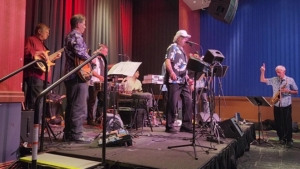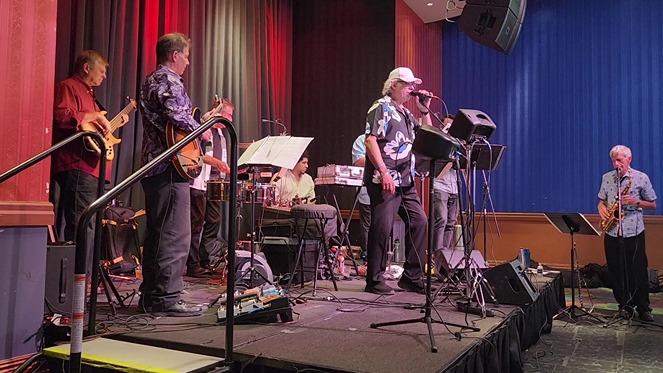Own the Music!
/by Dennis WingePreparing for a gig is not just about knowing your instrument or the songs you’ll play; it’s about embodying the music and delivering a performance that resonates with both the audience and your fellow musicians. It’s an opportunity to showcase your skills, make a lasting impression, and grow as an artist.
In this blog post, I’ll share my experience of preparing for a gig with Salsa Libre, a renowned salsa band based in the Binghamton area. The band was scheduled to perform at Tioga Downs Casino in Nichols, NY, and I was asked to cover for their regular pianist. This situation demanded a high level of preparation, especially since I was stepping into a genre and role different from my usual gigs. The process taught me valuable lessons about preparation, attention to detail, and the importance of immersing oneself in the music.
Background
When the bandleader called me about filling in for the pianist, he mentioned that “you might need an hour or so to go over the material.” However, knowing the caliber of the musicians and the importance
- Making a Great Impression: I wanted to ensure that my performance stood out, potentially opening doors for future opportunities with this and other bands.
- Self-Satisfaction: The personal satisfaction of executing a flawless performance is invaluable. It’s a testament to one’s hard work and dedication.
- Learning Experience: This gig was a chance to enhance my skills and understanding of salsa music, particularly in areas like chart reading, repertoire, and specific Latin rhythms.
How I Prepared
1. Preparing My Binder
My first step was organizing all the materials. The bandleader provided PDFs of the charts, which I printed and meticulously prepared. I punched holes in the sheets, organized them alphabetically, and highlighted important sections like repeats and dynamics. This preparation ensured that I could easily navigate the charts during the performance.
2. Playing Through Each Song
I played through each chart, identifying and circling tricky passages. These included rhythmically challenging sections and parts where I was expected to play solo. By focusing on these areas, I ensured that I could confidently deliver the most challenging parts of the performance.
3. Making Audio Notes
I recorded audio notes for each song, highlighting key aspects to focus on. These notes included reminders about rhythm, transitions, and specific stylistic elements unique to each piece. This method allowed me to concentrate on the most critical aspects of the music.
4. Targeted Practice
Instead of playing through entire songs, I focused solely on the challenging parts. This approach, often called “targeted practice,” is efficient because it allows you to concentrate your efforts where they are most needed. By practicing the tricky sections repeatedly, I was able to iron out any issues and gain confidence.
5. Testing Without Audio Reference
Once I felt comfortable with the material, I practiced without the audio tracks. This step was crucial in ensuring that I could play the pieces accurately based on the written charts alone. It also helped me internalize the music, making it easier to perform without relying on external cues.
How It Went
The gig was a success. I delivered a performance that met the high standards expected by the bandleader and my fellow musicians. The hard work paid off, and I felt a deep sense of accomplishment. Here is a short excerpt of the performance.
The bandleader expressed his satisfaction in an email that said “Dennis–once again, great job yesterday. It’s wonderful to have a pro sit in for the first time and pretty much play the entire book
This feedback was incredibly rewarding. Not only did I manage to perform well, but I also left a positive impression that could lead to future gigs. The experience also provided me with new ideas and techniques that I could incorporate into my own projects, particularly my salsa band, Salsa Ithacana.
Conclusion
Preparing for a gig is about more than just learning the notes. It’s about understanding the music, internalizing it, and delivering a performance that feels natural and authentic. The process requires dedication, attention to detail, and a willingness to go above and beyond what is expected. By investing time and effort into preparation, you not only ensure a great performance but also set the stage for future opportunities. Remember, the goal is not just to play the music but to own it.
—
Book a free trial lesson, available both in-person and online. Fill out this form and we’ll get back to you within 24 hours.


